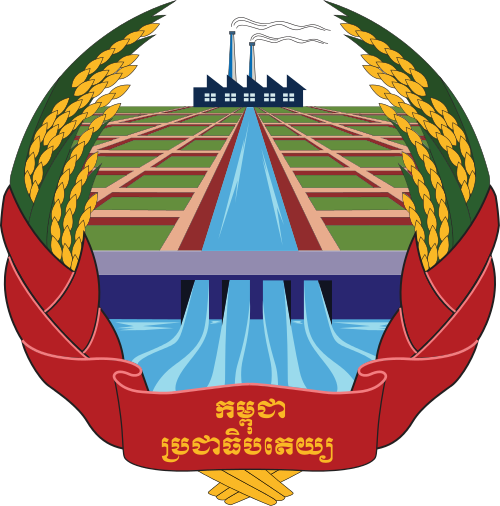The economy of Democratic Kampuchea (1975-1979), under the rule of the Khmer Rouge, represented one of the most radical economic experiments in modern history. Guided by a vision of creating a classless agrarian society, the regime’s policies aimed to eradicate the previous socio-economic structures. The impact of these policies was profound, leading to widespread suffering, famine, and ultimately the collapse of the Cambodian economy. This article delves into the key aspects of the economy during this tumultuous period.
Ideological Underpinnings
The Khmer Rouge, led by Pol Pot, embraced an extreme form of agrarian socialism. Their ideology was heavily influenced by Marxism-Leninism but diverged significantly in its execution. The regime’s economic philosophy emphasized:
- Agrarian Socialism: The Khmer Rouge believed that a return to agrarian values and practices would facilitate the establishment of a classless society. They viewed the peasantry as the backbone of the revolution and aimed to mobilize rural labor to achieve their goals.
- Collectivization: A core tenet of the regime’s economic strategy was the collectivization of agriculture. The Khmer Rouge sought to eliminate private property and create collective farms, where all land and resources would be shared among the people.
- Self-Sufficiency: The Khmer Rouge aimed for economic self-sufficiency, seeking to produce all necessary goods within Cambodia. This policy was rooted in a distrust of foreign influence and a desire to create an independent communist state.
Economic Policies and Their Implementation
The Khmer Rouge implemented several radical policies that dramatically transformed Cambodia’s economy:
1. Land Redistribution and Collectivization
Upon taking power in April 1975, the Khmer Rouge launched a campaign of land redistribution, forcibly evacuating urban dwellers and repurposing urban centers into rural communes.
- Forced Evacuations: The regime evacuated cities like Phnom Penh, sending millions of people to the countryside to work on collective farms. This upheaval aimed to dismantle urban bourgeoisie structures and promote rural living.
- Collective Farming: Collective farms, or “krom,” were established across the country. The regime sought to consolidate land and labor, promoting communal work. However, the implementation was chaotic and poorly organized, leading to agricultural disruptions.
2. The Super Great Leap Forward
In 1976, the Khmer Rouge launched the Super Great Leap Forward, an ambitious campaign aimed at rapidly transforming the agricultural sector and modernizing the economy.
- Economic Objectives: The initiative aimed to increase agricultural productivity through mass mobilization and technological innovation. It was framed as a socialist endeavor but functioned more as a mechanism for resource extraction to fund the regime’s ambitions.
- Consequences: The campaign led to disastrous outcomes. Forced labor and unrealistic production quotas resulted in widespread famine. The failure to produce enough food for the population culminated in one of the worst humanitarian crises in history.
3. Control of Trade and Industry
The Khmer Rouge’s economic strategy also included stringent control over trade and industry.
- Nationalization: The regime nationalized all industries, effectively ending private enterprise. Factories, businesses, and foreign investments were seized and turned into state-run operations, often lacking the necessary expertise and infrastructure.
- Isolationism: The Khmer Rouge pursued a policy of economic isolation, severing ties with foreign markets and minimizing international trade. This isolation exacerbated the economic decline and contributed to shortages of essential goods.
4. Labor Mobilization and Forced Labor
The regime relied heavily on forced labor to realize its economic objectives. The population was mobilized to work on agricultural and infrastructure projects under dire conditions.
- Work Camps: Many Cambodians were subjected to forced labor in work camps, where they faced grueling workloads, inadequate nutrition, and harsh treatment. These camps were often overseen by Khmer Rouge military personnel, creating an environment of fear.
- Impact on Productivity: The reliance on forced labor stifled productivity. The lack of incentives and the brutal working conditions led to high mortality rates and widespread suffering among the labor force.
5. Agricultural Policy and Production
The agricultural policy under the Khmer Rouge was focused on achieving high output through collectivization but was marked by severe mismanagement.
- Agricultural Output: Despite ambitious goals, agricultural production plummeted during this period. The regime’s focus on rice cultivation led to monoculture practices, which undermined soil fertility and resilience against pests.
- Famine and Starvation: The combination of forced labor, mismanagement, and poor agricultural practices resulted in widespread famine. Millions of Cambodians died from starvation and malnutrition, contributing to the regime’s infamous legacy of death and suffering.
Economic Collapse and Aftermath
The economic policies of Democratic Kampuchea ultimately led to the regime’s downfall. By 1979, the economy was in shambles, and the population was decimated.
- Vietnamese Invasion: The collapse of the Khmer Rouge was precipitated by the Vietnamese invasion, which overthrew the regime in January 1979. The subsequent occupation exposed the full extent of the devastation wrought by Khmer Rouge policies.
- Legacy of Destruction: The economic legacy of Democratic Kampuchea was one of ruin. The agricultural sector was crippled, industrial output was negligible, and the country faced an enormous humanitarian crisis. The scars of this period continue to affect Cambodia’s development trajectory.
Conclusion
The economy of Democratic Kampuchea serves as a stark reminder of the dangers of radical ideology when applied without regard for human cost or practical realities. The Khmer Rouge’s experiments in collectivization, forced labor, and isolationism led to one of the darkest chapters in Cambodian history, with lasting repercussions that the country continues to grapple with today. Understanding this economic history is crucial for grasping the complexities of Cambodia’s recovery and ongoing development.









